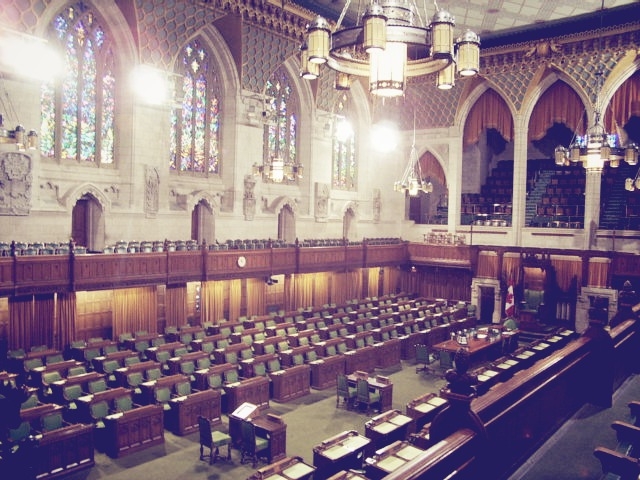
The (F)laws of Averages
October is “Healthy Workplace Month.” But you wouldn’t know it by the federal government’s views on sick leave, or from the increase in disability claims among federal government workers, including those related to mental health.
Since the Conservatives first came to power in 2006, disability claims have increased 37 per cent, and today roughly 48 per cent of all new disability claims are related to mental health issues. But if anyone believes that the Conservatives care about the health of federal government employees they should think again.

Early in June, in the midst of his government’s scorched-earth staff and program cuts, Treasury Board President Tony Clement kicked-off National Public Service Week (ordinarily a time of celebration) with news that the government would be “getting tough” on the leave provided to employees unfortunate enough to get sick.
His political message was clear: federal government sick leave is out of control, and taxpayers shouldn’t be made to pay the ever-increasing bill for the country’s largest group of employees. The amount of banked, unused sick leave accumulated by government employees, according to Treasury Board, represents a $5-billion liability. And government workers, said the Minister, on average use 18.2 sick days a year, far more than the average in the private sector.
The Minister went on to say that young and newer employees who face serious illness or disability but who do not have sufficient banked sick leave to qualify for long-term disability shouldn’t be unfairly treated. No one, least of all unions, would disagree. But in the end, Clement’s fiscal check-up on federal government sick leave was a typical blame-the-victim message from a government long past caring about its obligations to truth, let alone its employees.
For starters, the $5-billion liability is grossly misleading since no federal government workers are allowed to cash in their unused sick days when they retire or otherwise leave the government. In fact, many if not most leave with large numbers of unused sick days, proof not only that most do not take advantage of the system, as Clement took pains to acknowl-edge, but that they use their available sick leave sparingly and responsibly.
So what about the average 18.2 days per year taken by government workers? Turns out the Minister included both paid and unpaid days off, as he also acknowledged when asked by reporters. So that number too isn’t a fair reflection of the actual cost to Canadian taxpayers.
Unions, like the rest of the public, don’t have access to any figures other than those the government provides, so we have no way of really assessing their validity. But it seems pretty obvious that a lot of factors can skew the “average” number of sick days. For example, a relatively small percentage of workers off work for long periods of time due to illness or disability can significantly affect an overall average. Workers employed in particularly stressful work environments – correctional services or the military, for example – can also affect the average as can a failure to manage return-to-work options that would allow more employees with a disability to continue working or to return to work sooner.
And what about the private sector? Well, let’s just say that not all workers (especially those without unions) are treated fairly or equally.
Many workers in the private sector are casual, part-time, self-employed, and/or otherwise precariously employed (all of them far more numerous than some might imagine). They know that a day not worked is a day not paid. Nor, for that matter, do they record a sick day. That means that sick leave statistics for the public sector are generally more accurate and reliable than those for the private sector. An apple is not an orange, and shouldn’t be compared to one.
So how do public- and private-sector sick leave averages actually compare? And should it really matter? The short answers are: probably “very closely” and, “yes, it should” – but not for the reasons Tony Clement would have us believe.
Everyone gets sick, sometimes seriously, sometimes permanently. The point of sick leave, like public health care, is to ensure that workers – whether in the private or the public sector – don’t suffer added financial harm on top of the illnesses and disabilities to which we’re all prone.
To a government that has permanently capped health transfer payments to the provinces at a fixed percentage increase, that’s not a fact that fits with their political message, nor to the law of averages. This is something Canadians should consider when the time comes to bargain over who runs the next federal government.
Gary Corbett is President of the Professional Institute of the Public Service of Canada, the largest union of scientists and other professionals in Canada.






